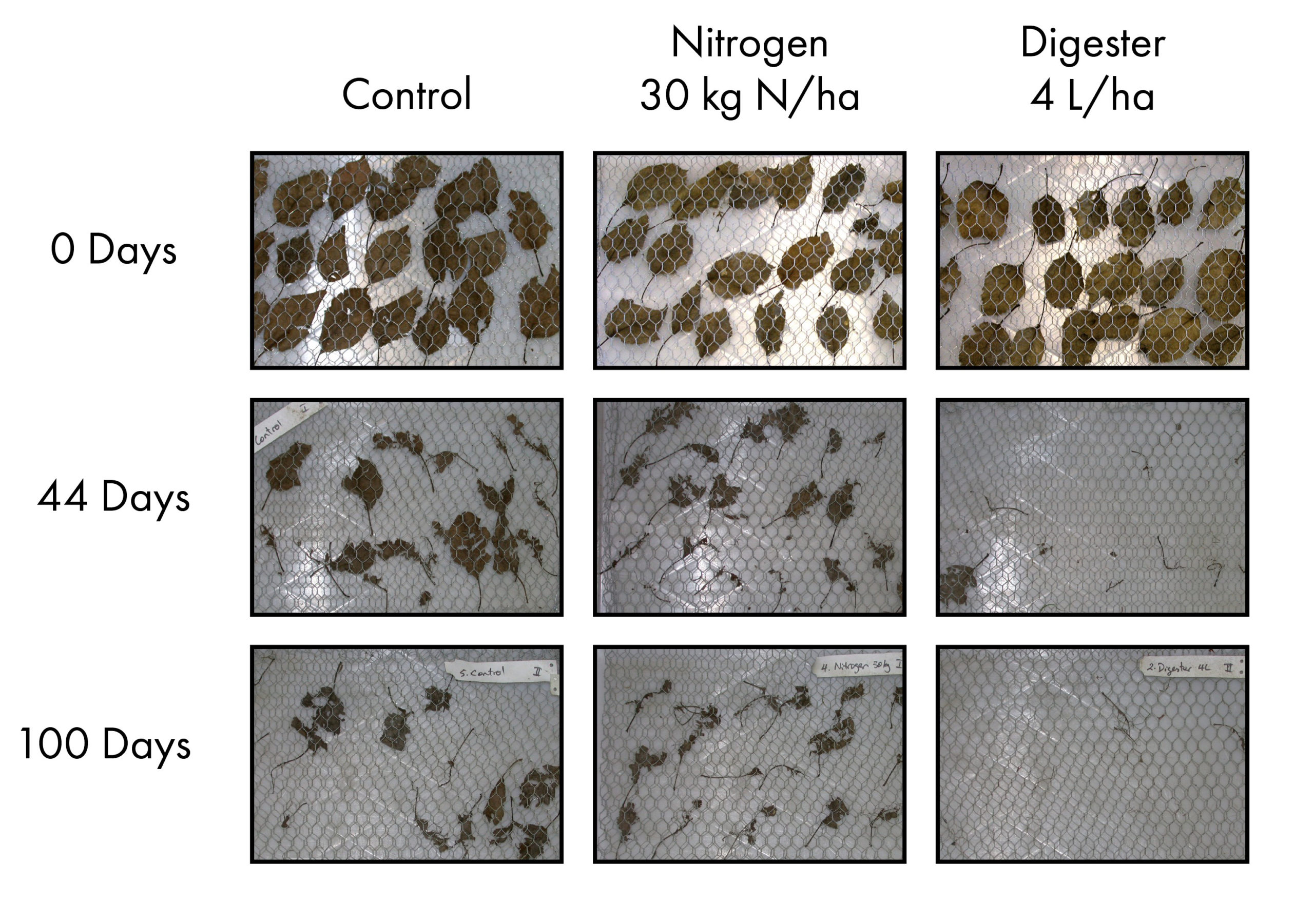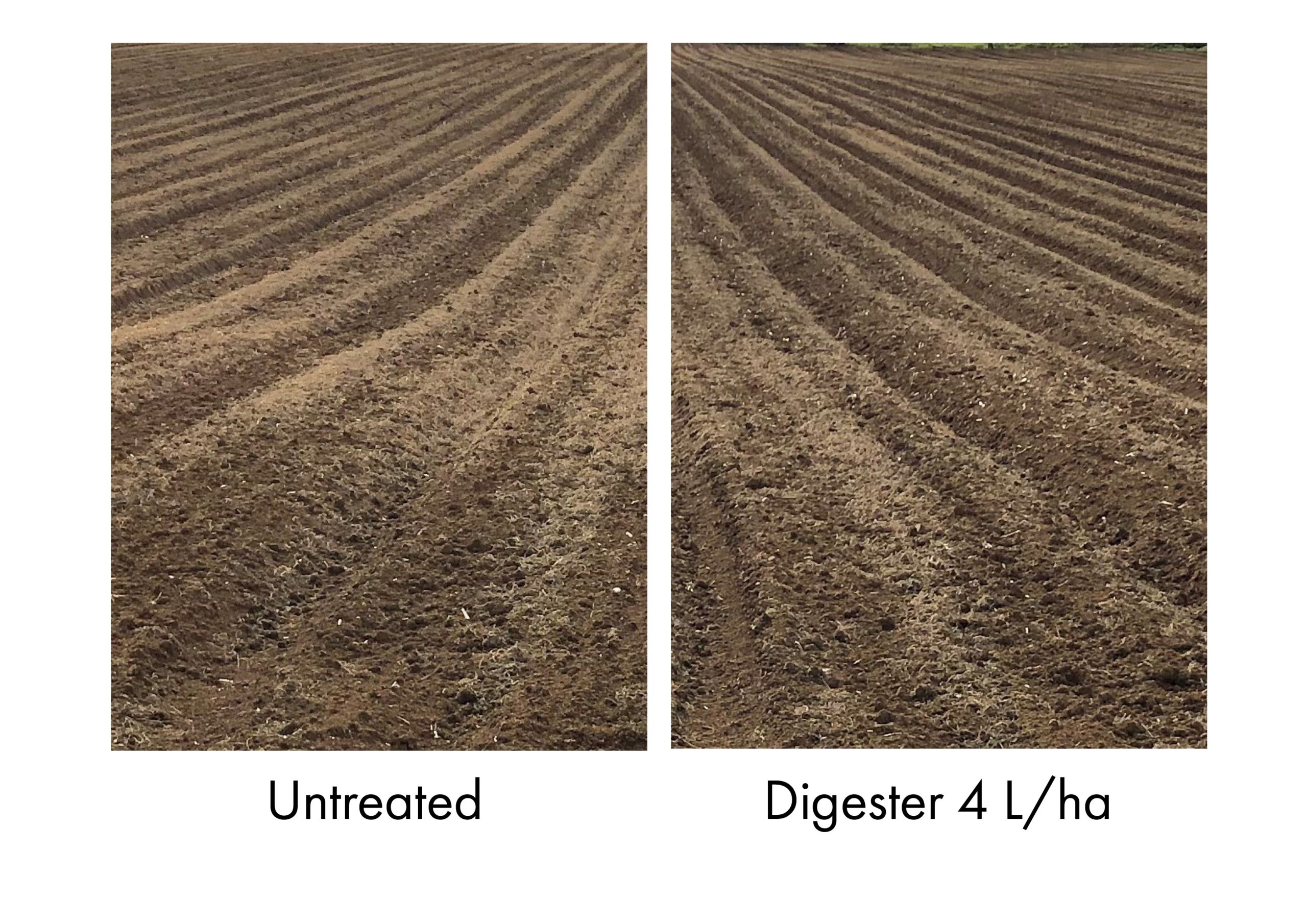Bioguide #7
Improving decomposition and nutrient recycling
The science behind breaking down organic matter.
One of the key roles microbes play on the farm or orchard is the decomposition of organic matter and the recycling of nutrients back into the soil.
Organic matter leftover from harvesting or pruning can include deciduous leaves, stubble from crops, old roots or pruned branches. Over winter, this organic matter needs to be broken down before the new season begins. Similarly, autumn-sown cover crops need to be broken down before the new crop can be planted.
This breakdown is the process of nutrient recycling. Soil microbes eat the old plant organic matter which releases the nutrients. This recycles last season’s nutrients back into the soil, ready for plants to take up next season. In fact, without complete breakdown of organic matter, we slow down the nutrient cycle.
There are other advantages to breaking down plant organic matter thoroughly and rapidly:
- Organic matter is converted into humus, increasing a soil’s cation exchange capacity (CEC) or ability to store cations such as calcium, potassium, magnesium, zinc and manganese.
- Organic matter levels increase, also increasing the soil’s water holding capacity.
- Plant diseases that overwinter on dead plant leaves or branches (e.g. Botrytis and powdery mildew), unpicked fruit (e.g. Sclerotinia) and dead roots (e.g. Rhizoctonia) are reduced by breaking down the substrate, which kills pathogens.
- Old roots in mature vineyards and orchards are broken down, improving soil aeration and providing room for new root growth in spring.
The lignified plant cell walls in organic matter can be hard to breakdown, requiring a wide range of organisms working closely together, including:
- Saprophytic Fungi – these are critical as they produce the enzymes needed to breakdown lignin and expose the cellulose in the cell walls to other microbes. These fungi are very efficient at scavenging for nitrogen in soils.
- Saprophytic bacteria – these work in conjunction with the saprophytic fungi and provide the nutrients they need. Some of these can fix atmospheric nitrogen for other microbes to use.
- Actinomycetes – these microbes are another critical part of the process and can produce many anti-microbial compounds which assist in controlling plant diseases. Most of our antibiotics are made by actinomycetes.
- Protozoa – these larger organisms consume certain parts of the crop trash, breaking down the particle size and thereby increasing the surface area available for microbes to breakdown organic matter.
Using Soil Biostimulants to accelerate the breakdown of plant organic matter
To increase these microbial populations and breakdown organic matter faster, farmers and growers can help create the right conditions.
BioStart has developed a soil biostimulant called Digester, designed to activate saprophytic microbes in soils. The imagery below demonstrates how boosting saprophytic microbe populations can benefit the nutrient recycling process:

Figure 1 – shows how applying Digester to apple leaves increases the speed of breakdown (over that of a nitrogen-rich urea control group). Another great way to use Digester is to co-apply it with a herbicide to a cover crop.

Figure 2 – shows how adding Digester to glyphosate increased breakdown of an oat cover, enabling the seedbed to be prepared faster.
Ready to get started?
Check out our range of products dedicated to soil health:

